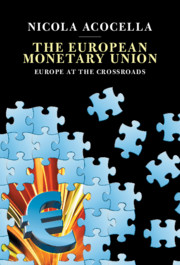Book contents
- The European Monetary Union
- The European Monetary Union
- Copyright page
- Dedication
- Contents
- Figures
- Tables
- Preface
- Acknowledgments
- Abbreviations
- Part I The Historical and Institutional Background
- Part II Institutions and Policies in Action
- Part III Lines of Reform of EMU Institutions
- 8 How to Reform the EU and the EMU: Broad Outlines
- 9 How to Reform the EU and the EMU
- 10 How to Reform the EU and the EMU
- 11 Conclusions
- References
- Index
11 - Conclusions
The Future of the Union
from Part III - Lines of Reform of EMU Institutions
Published online by Cambridge University Press: 19 August 2020
- The European Monetary Union
- The European Monetary Union
- Copyright page
- Dedication
- Contents
- Figures
- Tables
- Preface
- Acknowledgments
- Abbreviations
- Part I The Historical and Institutional Background
- Part II Institutions and Policies in Action
- Part III Lines of Reform of EMU Institutions
- 8 How to Reform the EU and the EMU: Broad Outlines
- 9 How to Reform the EU and the EMU
- 10 How to Reform the EU and the EMU
- 11 Conclusions
- References
- Index
Summary
Chapter 11 reiterates that after the (premature) celebration of the splendor of the EMU, the crisis has soon shown the sad reality. A debate on the various prospects open has then arisen, involving economists, politologists, political parties, and laymen. The EMU is now really at a crossroads. A number of differences divide the various countries and make amendments to its institutions very difficult to devise and, even more, to implement. The Union would need more common institutions, notably a fiscal union, but there are a number of obstacles to its implementation. These derive from structural differences between the countries that have even been exacerbated by the effects of the crisis and differences finding their roots in historical, cultural, and material differences. The main alternatives open to the EMU are: its break up, a many-speed Union, exit of some countries, structural reforms of the EMU institutions and policies. While the perspective of a break up seems to fade, the other alternatives are still grounded. Some steps for pursuing over the next years not only economic and political goals, but also democratic accountability and effective governance are possible. Much will depend on the orientation of the new Commission.
Keywords
- Type
- Chapter
- Information
- The European Monetary UnionEurope at the Crossroads, pp. 366 - 388Publisher: Cambridge University PressPrint publication year: 2020

